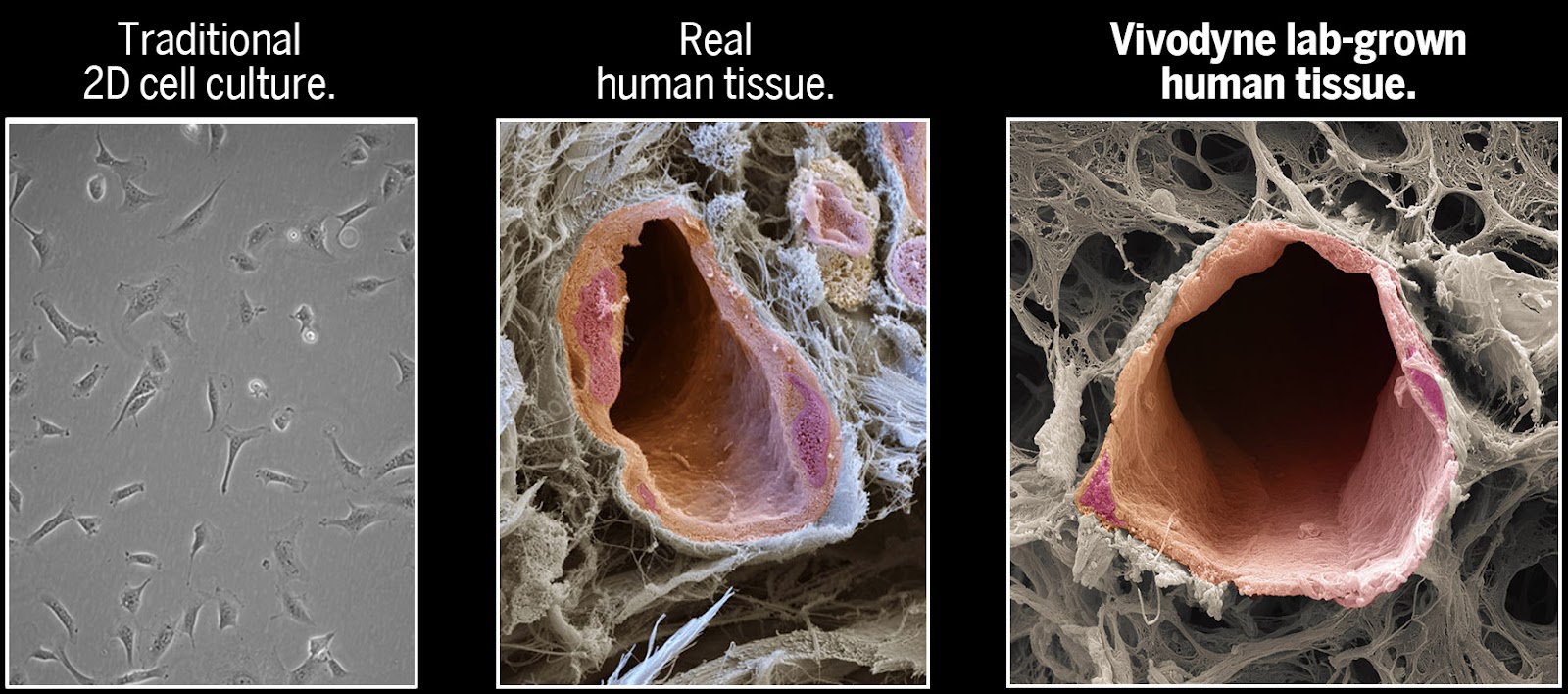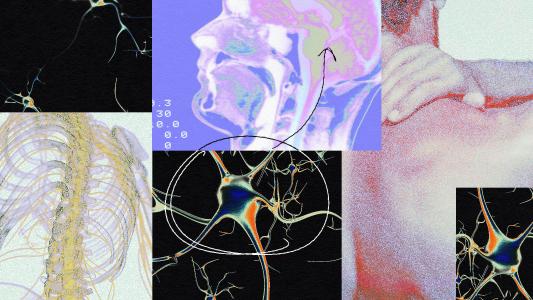Biotech startup Vivodyne is planning to revolutionize drug development with an AI-powered robot that can grow, dose, and analyze thousands of samples of human tissues at once.
“The fundamental purpose of Vivodyne is to allow human testing [of drugs] on lab-grown human tissues before they get to clinical trials and are tested on real people,” CEO Andrei Georgescu told Freethink. “So it’s like human testing before testing on real people.”
The challenge: Drug development typically starts with testing on human cells in petri dishes. If the cells react to a drug how researchers hope they will, they might then test it on animals, and if those tests go well, trials in humans might follow.
“Pharma companies find themselves entering clinical trials with a massive blind spot.”
Andrei Georgescu
About 90% of drugs that reach human trials will fail, though — the way animals respond to a medication simply isn’t a great predictor of how humans will respond to it.
“Pharma companies find themselves entering clinical trials with a massive blind spot,” said Georgescu. “They try their best to gather data that is going to be predictive of the safety and the efficacy of the drug in clinical trials, but this kind of daunting final experiment of, ‘I wonder what the human response will be?’ basically has to be left to the end.”
Because drug developers end up investing money and time into so many drugs that ultimately fail, the average R&D spending to bring just one successful drug to market ends up being about $2 billion.
“Pharma companies and biotechs alike would certainly like to have that information [on human response] in advance, so they don’t go and spend all that money,” said Georgescu.

Robots for science: Vivodyne has developed a platform it hopes will dramatically improve the success rate for drugs that reach clinical trials — and even lead to the discovery of therapies that might not have been identified otherwise.
At its core is a robotic system that can grow more than 20 types of human tissues — including liver, lung, and skeletal muscle tissue — each containing between 200,000 to 500,000 cells, and then dose them with drugs.
Because their lab-grown human tissues mimic the organization and function of real human tissue, they’re a better representation of how a person would respond to a drug than the loose collection of human cells in dishes typically used during development.
While Vivodyne isn’t the first group to create lab-grown human tissues for drug testing, it has figured out how to automate and dramatically scale the process — its robotic platform can cultivate and dose more than 10,000 tissue samples at a time.
“We can grow complex human tissues with the realism of their organization and function in people, but at the scale of these much simpler experiments of just cells in a dish,” said Georgescu. “So it allows us to have the best of both, while also gaining the reproducibility and consistency in the experiments that’s possible with large-scale robotic automation.”
Vivodyne is also developing AI models that can analyze its platform’s lab-grown human tissues to predict patient responses and identify new targets for drugs. As the company grows more tissues, it generates more data to improve the accuracy of these models.
“We can get human predictive data, almost as if we took a little biopsy of human tissue and tested on it, except on the scale of tens or hundreds of thousands, way, way before clinical trials, all the way to the beginning of a drug discovery effort,” said Georgescu.
Looking ahead: On November 22, Vivodyne announced that it had raised $38 million in financing. The company now plans to use that money to further develop its platform, with a particular focus on expanding the types of diseased tissues it can create.
“Making healthy tissues is actually quite a bit easier than making diseased tissues because the cells naturally have this programming of, ‘I should probably make a healthy tissue,’” said Georgescu.
“It is not inherent to them that they should make something that is dysfunctional or pathological, [but] the ability to steer them down this path … is the fundamental basis of how we identify new targets and how we test, discover, and develop therapeutics against those targets,” he continued.
Update, 12/11/23, 9:50 am ET: This article was updated to correct two minor transcription errors.
We’d love to hear from you! If you have a comment about this article or if you have a tip for a future Freethink story, please email us at [email protected].






